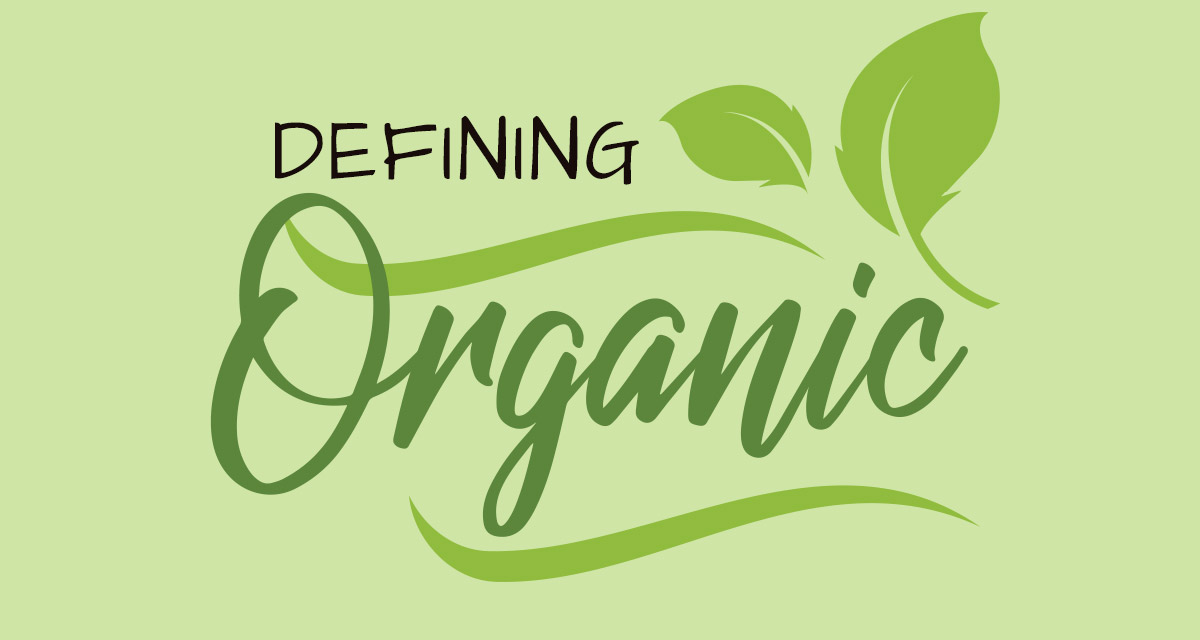Labels are important! One word boosted the total food sales by 5.9% in 2018 to reach $47.9 billion—“organic.” The difficulty for consumers lies in this label, dominating the market place with confusing variations, such as “Certified Organic,” “100% Organic,” “Made with Organic Ingredients,” and “Organic.” How can buyers thus differentiate between product healthfulness within a regulated organic standard? On the one hand, shoppers can buy two types of apples, both grown in an orchard and stamped “organic.” In the cereal aisle, due to the growing demand for nutritious foods offering a higher revenue, boxes line the shelves with “organic,” “gluten-free,” and “non-GMO” options. The “organic” label suggests a product is healthy, but is it?
What Does Organic Mean?
A while ago, a movement gained traction to produce products made from organically produced raw materials. Farmers, to obtain USDA-accreditation monitored by the National Organic Program, NOP, had to maintain detailed records in fulfilling a list of food-growing or livestock-raising requirements up to the process of processing, packaging, and labeling. Organic crop and livestock farming practices now have to meet the following goals. They must:
- Provide safe, natural, and healthy livestock habitats;
- Supply animals with 100% organic feed and forage without the administration of antibiotics or hormones;
- Enhance soil and water quality;
- Promote a self-sustaining cycle of resources;
- Use USDA approved natural and synthetic pesticides.
Practices exclude:
- Adding synthetic or sewage fertilizers to the soil;
- Genetic engineering;
- Antibiotics or growth hormones for livestock.
What is Certified Organic?
A label of “USDA Organic” or “Certified Organic” is a seal which promises the product contains 95% of its ingredients free of synthetic additives, chemical fertilizers, and dyes, and was processed without industrial solvents or genetic engineering. (The total amount of pesticides found in organic foods is roughly 7% compared to 38% in conventionally-farmed produce.)
What is 100% Organic?
Eighty-two percent of Americans feel tricked by nutrition labels, while 44% believe brand names mislead consumers as a means to sell the product. Questioning the label only partially assists the curious shopper. “100% organic” is a falsified label. The product needs to contain only a minimum of 70% natural ingredients, and the remaining 30% simply cannot be foods or processed with additives on an exclusion list. The product and the means of processing must follow a specific requirement criterion to receive the USDA Organic seal.
What Does “Made with Organic Ingredients” Mean?
The value in reading labels is that they may list up to three ingredients or food groups on the front panel that comprise less than 70% organic. In such cases, comparative shoppers will not find a USDA Organic seal on the package or a claim of organic certification.
Affiliation to Organic Labeling
A consumer needs to look first at the label and read carefully, especially if it includes the words “natural,” “non-GMO,” and ‘kosher.” These words may be a marketing ploy to boost purchases.
- With “gluten-free” foods, scan the ingredients to see if GMOs made the list. Corn, for instance, may contain a deadly insecticide termed “BT toxin.” Check that all “gluten-free” items have a seal declaring them as “certified non-GMO.”
- The “kosher” certification relates only to the preparation and process of the ingredients, and not the use of GMOs.
- Be aware of the countries listed on a product. Chinese produce, for instance, consistently has a higher percentage of heavy metals, such as cadmium, lead, and mercury, than competing produce grown in America. While the FDA conducts contaminant tests on imported foods, the percentage may qualify as too low to result in a short-term health risk. Salmonella and E. coli are two polluting contaminates found on a restricted list.
Safe Foods
Termed the “Clean 15,” the following fruits and vegetables have a low risk for pesticides; therefore, you do not need to buy if labeled “organic”: asparagus, avocado, eggplant, cabbage, cantaloupe, grapefruit, kiwi, mango mushrooms, onion, papaya, pineapple, sweet corn, sweet peas, and sweet potato.
Meet Your Farmers
Farmers’ markets and small local farms can assure you of their procedure for raising grass-fed cows or growing natural produce. When visiting the farm, you can see pastures and gardens firsthand. Whether you decide to join a co-op, purchase shares in a farm, or buy produce or meats directly from a farmer, the means for eating nutritious foods are nearby. It is not always about the word “organic.” The goal is to buy quality foods that you can trust. And, investing in a farmer or a person who holds high food standards is the ultimate goal!




















